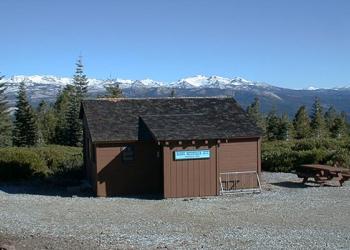Welcome to Eldorado National Forest
Thousands of visitors are drawn each year to the Eldorado National Forest’s rivers, lakes, and streams alive with fish; mountains and meadows for alpine and nordic skiing; campsites and picnic areas in alpine backcountry and diverse forests. Four hundred miles of hiking trails pass through all kinds of terrain, from gentle oak foothills on the west to the 10,000-foot crest of the Sierra Nevada. Two major highways - Highway 50 and Highway 88 - run through the Forest, making it an easy drive from Sacramento and the San Francisco Bay Area.
The Forest Service is committed to nurturing and managing the National Forests in order to ensure the health of the land. As we respectfully use and play in these precious public lands, we are taking part in a shared vision for the future.
Current Conditions

The forest is always changing. Find out the latest in weather, road and campground status, lake levels, fish stocking, etc.!



